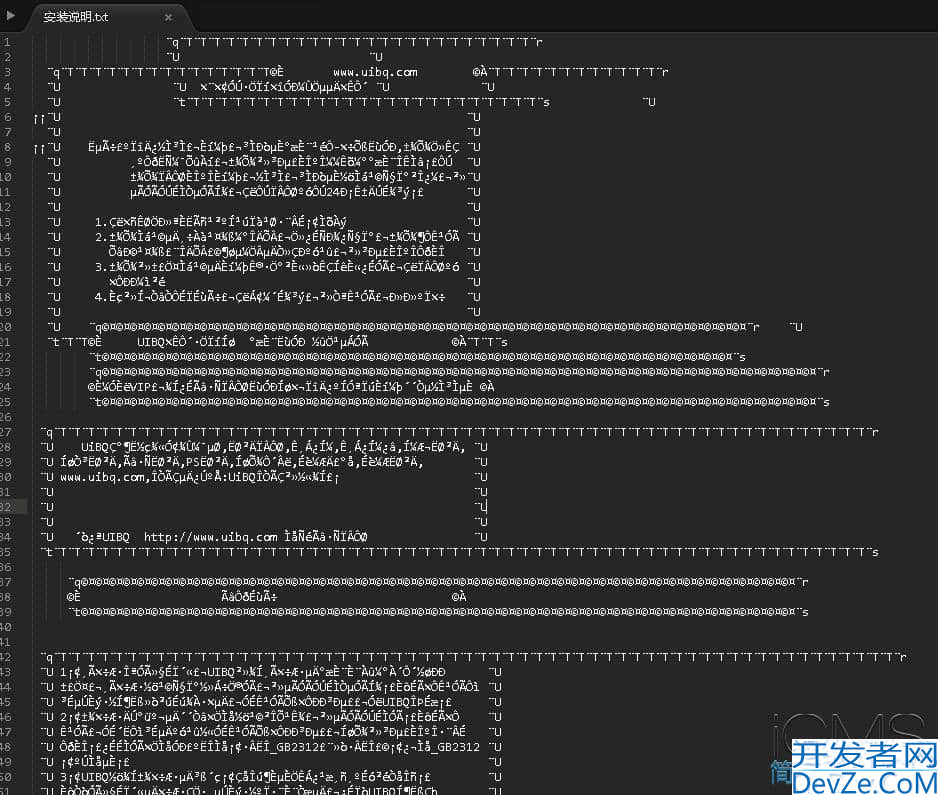go语言中proto文件的使用
目录
- 一、定义数据结构
- 二、定义服务
- 三、生成 Go 代码
- 四、在 Go 代码中使用
在 Go 语言中,.proto文件是用于定义 Protocol Buffers 数据结构和服务的文件格式。Protocol Buffers 是一种语言无关、平台无关、可扩展的序列化机制。
以下是关于 Go 语言中.proto文件的一些重要方面:
一、定义数据结构
- 在
.proto文件中,可以使用message关键字定义数据结构。例如:
syntax = "proto3";
package example;
message Person {
string name = 1;
int32 age = 2;
}
这里定义了一个名为Person的消息类型,包含两个字段:name(字符串类型)和age(整数类型)。
二、定义服务
- 可以使用
service关键字定义 RPC(Remote Procedure Call)服务。例如:
syntax = "proto3";
package example;
service Greeter {
rpc SayHello (HelloRequest) returns (HelloReply) {}
}
message HelloRequest {
string name = 1;
}
message HelloReply {
string message = 1;
}
这里定义了一个名为Greeter的服务,包含一个名为SayHello的 RPC 方法,该方法接受一个HelloRequest类型的请求并返回一个HelloReply类型的响应。
三、生成 Go 代码
使用protoc工具和相应的 Go 插件可以将.proto文件编译为 Go 代码。例如:
protoc --go_out=. --go_opt=paths=source_relative example.proto
这将生成与.proto文件中定义的数据结构和服务对应的 Go 代码文件。
四、在 Go 代码中使用
生成的 Go 代码可以在 Go 项目中导入并使用。例如:
package main
import (
"context"
"log"
"example"
)
func main() {
client := example.NewGreeterClient(conn)
resp, err := client.SayHello(context.Background(), &example.HelloRequest{Name: "world"})
if err!= nil {
log.Fatalf("could not greet: %v", err)
}
log.Printf("Greeting: %s", resp.Message)
}
这里假设已经建立了与服务器的连接(conn),并使用生成的Greeter客户端调用SayHello方法。
总之,.proto文件在 Go 语言中提供了一种强大的方式来定义数据结构和 RPC 服务,实现高效的序列化和跨语言通信。
接着咱们再多举几个例子:
以下是一个.proto文件生成多个 Go 文件的例子。
假设我们有一个名为demo.proto的文件,内容如下:
syntax = "proto3";
package demo;
message Product {
string name = 1;
float price = 2;
}
message Order {
int32 id = 1;
repeated Product products = 2;
}
service ProductService {
rpc GetProduct(ProductRequest)编程客栈 returns (ProductResponse) {}
}
message ProductRequest {
string name = 1;
}
message ProductResponse {
Product product = 1;
}
service OrderService {
rpc GetOrder(O编程客栈rderRequest) returns (OrderResponse) {}
}
message OrderRequest {
int32 id = 1;
}
message OrderResponse {
Order order = 1;
}
使用以下命令生成 Go 代码:
protoc --go_out=. --go_opt=paths=source_relative demo.proto
这将生成以下几个 Go 文件:
demo.pb.go:包含Product、Order、ProductRequest、ProductResponse、OrderRequest、OrderResponse等消息类型的定义。demo_product_service.pb.go:包含ProductService服务的客户端和服务器端接口定义以及相关的辅助函数。demo_order_service.pb.go:包含OrderService服务的客户端和服务器端接口定义以及相关的辅助函数。
在你的 Go 代码中,可以这样使用:
package main
import (
"context"
"log"
"demo"
)
func main() {
// 使用 ProductService
productClient := demo.NewproductServiceClient(conn)
productResp, err := productClient.GetProduct(context.Background(), &demo.ProductRequest{Name: "laptop"})
if err!= nil {
log.Fatalf("could not get product: %v", err)
}
log.Printf("Product: %v", productResp.Product)
// 使用 OrderService
orderClient := demo.NewOrderServiceClient(conn)
orderResp, err := orderClient.GetOrder(context.Background(), &demo.OrderRequest{Id: 123})
if err!= nil {
log.Fatalf("could not get order: %v", err)
}
log.Printf("Order: %v", orderResp.Order)
}
这里假设已经建立了与服务器的连接(conn),分别调用了生成的ProductService和OrderService的客户端方法。
以下是对上述 .proto 文件中各个部分生成的 Go 代码的解释:
message Product 定义:
message Product {
string name = 1;
float price = 2;
}
生成的 Go 代码中会有一个结构体来表示这个消息类型。例如:
type Product struct {
Name string
Price float32
}
注意,在 Go 中,float 类型在 Protocol Buffers 生成的代码中通常会转换为 float32。
message Order 定义:
message Order {
int32 id = 1;
repeated Product products = 2;
}
生成的 Go 代码为:
type Order struct {
Id int32
Products []*Product
}
这里 repeated 关键字表示一个可重复的字段,在 Go 中会生成一个切片。
service ProductService 定义:
service ProductService {
rpc GetProduct(ProductRequest) returns (ProductResponse) {}
}
生成的代码中会有一个接口定义以及客户端和服务器端的实现相关代码。例如:
type ProductServiceClient interface {
GetProduct(ctx context.Context, in *ProductRequest, opts...grpc.CallOption) (*ProductResponse, error)
}
type ProductServiceServer interface {
GetProduct(context.Context, *ProductRequest) (*ProductResponse, error)
}
message ProductRequest 和 message ProductResponse 定义:
message ProductRequest {
string name = 1;
}
message ProductResponse {
Product product = 1;
}
生成对应的结构体:
type ProductRequest struct {
Name string
}
type ProductResponse struct {
Product *Product
}
service OrderService 定义类似 ProductService,会生成对应的客户端和服务器端接口以及相关代码。
总的来说,.proto 文件定义了数据结构和服务,通过 protoc 工具生成的 Go 代码可以方便地在 Go 项目中进行使用,实现高效的数据序列化和 RPC 通信。
以下再举个例子,看看.proto文件生成的 Go 文件数量主要取决于以下哪些因素
一、消息定义(Messages)
每个在.proto文件中定义的消息(message)都会生成一个对应的 Go 结构体。例如:
message Person {
string name = 1;
int32 age = 2;
}
message Address {
string street = 1;
string city = 2;
}
这将生成两个 Go 文件,分别包含Person和Address结构体的定义。
二、服务定义(Services)
每个定义的服务(service)会生成一个单独的 Go 文件,其中包含服务的客户端和服务器端接口定义以及相关的辅助函数。例如:
service UserService {
rpc GetUser(UserRequest) returns (UserResponse) {}
}
service OrderService {
rpc GetOrder(OrderRequest) returns (OrderResponse) {}
}
这将生成两个不同的 Go 文件,一个用于UserService,另一个用于OrderService。
三、包声明(Package Declaration)
如果在.proto文件中有明确的包声明,生成的 Go 文件将按照包名进行组织。相同包名下的多个消息和服务可能会被生成到同一个目录下的不同文件中,但它们都属于同一个 Go 包。例如:
package mypackage;
message Product {
string name = 1;
}
service ProductService {
rpc GetProduct(ProductRequest) returns (ProductResponse) {}
}
生成的 Go 文件将属于mypackage包,并且可能会根据具体的生成规则和工具配置,将消息和服务的定义分别生成到不同的文件中,但都在同一个包目录下。
综上所述,.proto文件生成的 Go 文件数量取决于消息的数量、服务的数量以及包声明等因素。生成的文件通常会按照清晰的结构组织,以便在 Go 项目中进行方便的使用和管理。
生成几个 Go 文件主要看 .proto 文件中定义的消息(message)数量、服务(service)数量以及是否有明确的包声明,这些因素共同决定了生成的 Go 文件的数量和组织方式。
比如:
以下是一个简单的 .proto&nandroidbsp;文件示例:
syntax = "proto3";
package example;
message Book {
string title = 1;
string author = 2;
}
message Library {
repeated Book books = 1;
}
service BookService {
rpc GetBook(BookRequest) returns (BookResponse) {}
}
message BookRequest {
string title = 1;
}
message BookResponse {
Book book = 1;
}
这个 .proto 文件会生成以下 Go 文件:
- 一个包含
Book和Library结构体定义的文件。 - 一个包含
BookService服务的客户端和服务器端接口定义以及相php关辅助函数的文件。 - 一个包含
BookRequest和BookResponse结构体定义的文件。
所以,这个简单的例子中有三个主要的部分生成了三个不同的 Go 文件。生成的文件数量取决于消息的数量和服务的数量等因素。
到此这篇关于go语言中proto文件的使用的文章就介绍到这了,更多相关go语言 proto文件内容请搜索编程客栈(www.devze.com)以前的文章或继续浏览下面的相关文章希编程望大家以后多多支持编程客栈(www.devze.com)!






 加载中,请稍侯......
加载中,请稍侯......
精彩评论